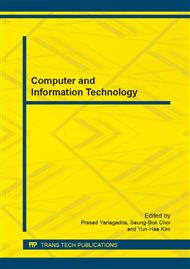p.1095
p.1099
p.1105
p.1109
p.1114
p.1121
p.1129
p.1133
p.1139
Maximum Power Control of Thermoacoustic Linear Generator in Discontinuous Conduction Charging Mode
Abstract:
The thermoacoustic electricity generator system can convert heat from the low quality heat source such as automobile exhaustsolar energyindustrial waste heat etc into electricity. But battery Harvests a little charging power from the system due to the soft load characteristic, which restricts the application of the thermoacoustic electricity technology. In order to improve the Harvesting ability of battery charging power , a mathematical model of the thermoacoustic electricity generator battery system are established and a charging power harvesting control strategy is put forward in this paper. The modelingsimulation and control of charging power maximization harvesting are systematically investigated by computer-aided analysis in Matlab.
Info:
Periodical:
Pages:
1114-1117
Citation:
Online since:
February 2014
Authors:
Price:
Сopyright:
© 2014 Trans Tech Publications Ltd. All Rights Reserved
Share:
Citation:


